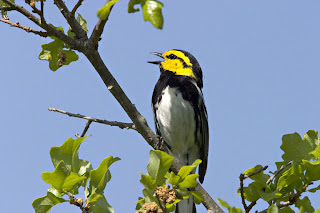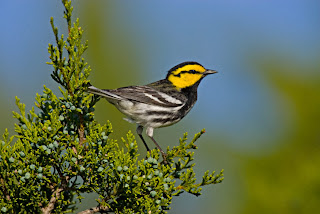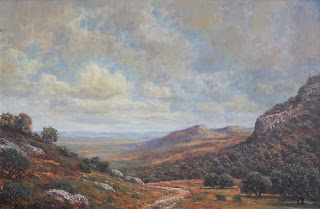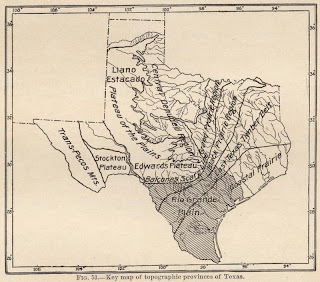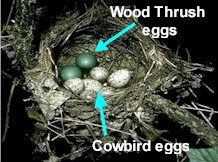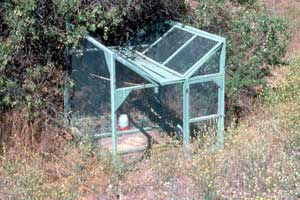 (photo)http://animaldiversity.ummz.umich.edu/site/accounts/information/Dendroica_chrysoparia.html
(photo)http://animaldiversity.ummz.umich.edu/site/accounts/information/Dendroica_chrysoparia.htmlThe Golden-cheeked Warbler (Dendroica chrysoparia) was listed as endangered 5/04/1990. At that time there was an estimated 2,200 to 4,600 birds left. They are endangered because of habitat loss and fragmentation. Their breeding grounds are in Central Texas on the Edward's Plateau.
 (Map)http://uts.cc.utexas.edu/~gilbert/teaching/zoo369/vireowarb.html
(Map)http://uts.cc.utexas.edu/~gilbert/teaching/zoo369/vireowarb.html Golden-cheeked Warblers arrive at their breeding grounds in mid-March and nest from April to May. They nest in the tree canopy at a height of 4 to 5 meters. They sit on eggs for 12 days and it takes them 9 days to fledge.
 (photo) http://www.hq.usace.army.mil/CEPA/PUBS/may01/story8.htm
(photo) http://www.hq.usace.army.mil/CEPA/PUBS/may01/story8.htmThe Golden-cheeked warbler is also threatened by destruction of tropical rain forests. It winters in southern Mexico, Guatemala, Honduras, and Nicaragua.
Text Sources
http://animaldiversity.ummz.umich.edu/site/accounts/information/Dendroica_chrysoparia.html
http://www.tpwd.state.tx.us/huntwild/wild/species/gcw/
http://www.mbr-pwrc.usgs.gov/Infocenter/i6660id.html
http://www.cecer.army.mil/techreports/hay_warb/hay_warb-03.htm
http://www.bagheera.com/inthewild/van_anim_warbler.htm
